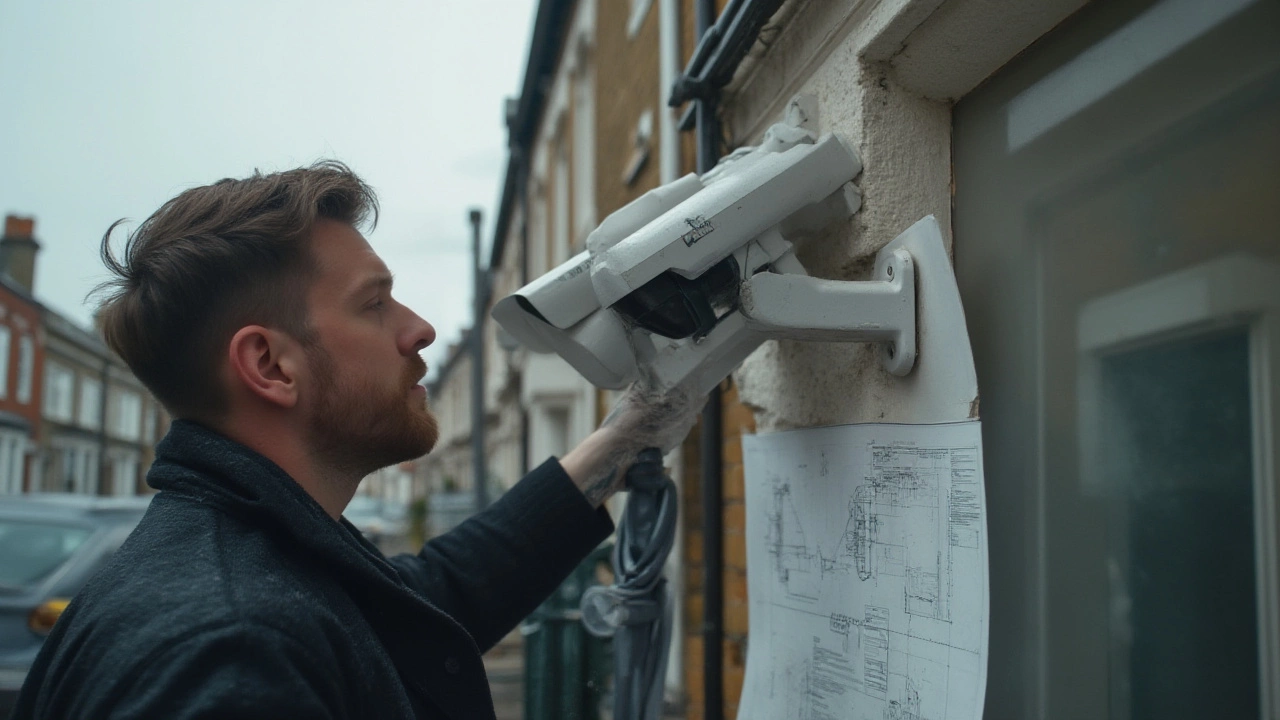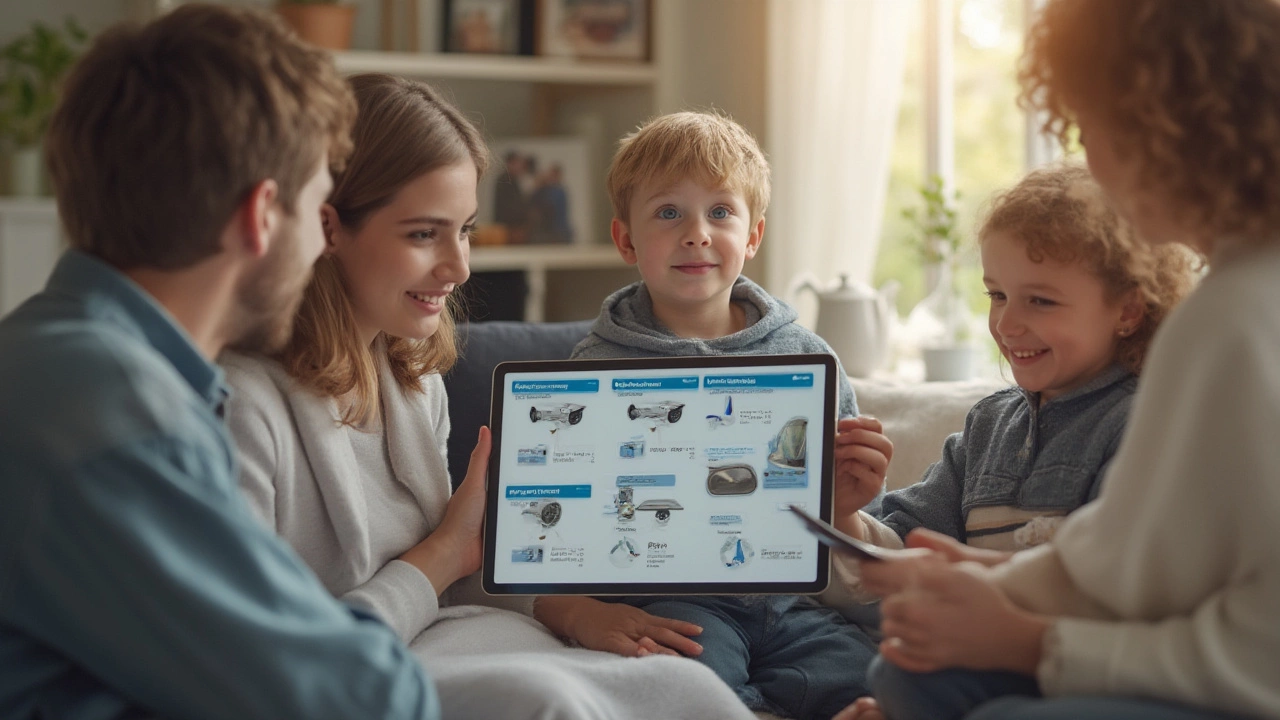Ever heard stories about burglars being scared off by the sight of a security camera? It's true—just having a camera in plain sight can make a massive difference. But when you decide to actually put CCTV up around your home or business, that's when the real questions start. Top of the list: how much is it going to cost you, actually, in 2025?
What Drives CCTV Installation Costs?
Walking into a store or scrolling online, you’ll notice CCTV cameras range from pocket-friendly to seriously pricey. Why is there such a big gap? Here’s what actually decides the number on your bill:
- Type of Camera: Dome, bullet, PTZ (pan-tilt-zoom), wireless, wired—each has a different price tag. Wireless systems tend to cost more upfront, but save you labour on wiring.
- Number of Cameras: Each extra camera means more hardware, installation time, wiring, and setup. A basic two-camera system is obviously cheaper than a setup with eight or more.
- Resolution: 4K ultra-HD cameras (which catch everything in amazing detail) can cost double or more than standard 1080p models.
- Recording and Storage: Some systems can save footage on-site (with a DVR/NVR box), some store it in the cloud. Cloud storage means a monthly fee on top of your install costs.
- Location and Accessibility: If your property’s a single-level bungalow with easy access to eaves, you’ll pay less. Multi-story homes, older buildings, or anywhere wires are hard to run will be pricier. Installing at a height or in extreme weather can require special gear too.
- Integration with Other Systems: Want your CCTV to connect to alarms, doorbells, or lights? More integration means more labour and occasionally more devices.
- Labour Rates: CCTV installers typically charge per hour or per camera. Rates fluctuate depending on your region, how busy they are, and their experience.
If you’re in a city like London, New York, or Sydney, expect everything—materials, labour, even parking fees—to be a bit more painful on the wallet than in smaller towns.
| Factor | Effect on Cost |
|---|---|
| Type of camera | Wired cheaper, wireless more expensive but easier install |
| Number of cameras | Each camera adds to total price |
| Resolution | Higher resolution means higher cost |
| Storage method | Cloud storage adds ongoing fees |
| Location | Difficult sites mean higher labour |
| Integration | More devices and systems, higher cost |
Typical Price Ranges in 2025
Here’s what people are actually paying right now—not some made-up number you’ll never see on an invoice. These are averages reported across the US, UK, and Australia for mid-2025, and should give you a real feel for budgeting:
- Single-camera wired system: $180 to $350 installed (includes basic 1080p HD camera, wiring, and setup)
- Four-camera wired system: $650 to $1,200 installed (mid-range cameras, simple DVR, typical for an average-sized home)
- Single wireless camera (with battery): $220 to $400 installed
- Four-camera wireless system (Wi-Fi): $950 to $1,600 installed
- 8-camera commercial system: $2,400 to $5,000+ installed (with higher-res cameras, 24/7 monitoring features, and better storage)
If you go the DIY route, you could buy a decent camera online for $50–$200 each, but it’s just that—the camera. You’ll still need mounts, cables (if wired), storage, a monitor, and time to set it up. Factor a couple hours per camera if you’re new to this stuff. Oh, and if you make a mistake drilling into that fancy brick facade, let’s hope you’re handy with putty.
On top of the initial outlay, some systems—especially those with remote viewing, cloud recording, or advanced analytics like facial recognition—charge between $4 and $30 a month.
| System Type | Average Installed Cost (USD) | Notes |
|---|---|---|
| Single wired camera | $180 – $350 | Entry level, no extras |
| Four wired cameras | $650 – $1,200 | Standard home setup |
| Wireless single camera | $220 – $400 | Battery or plug-in |
| Wireless four cameras | $950 – $1,600 | App connectivity, easier install |
| Commercial 8-cam set | $2,400 – $5,000+ | Includes monitoring, higher specs |
A 2025 survey from the Security Industry Association shows most homeowners spend between $980 and $1,350 for a new CCTV system covering all key entry points—this includes basic equipment, install, and setup. Commercial systems cost more mainly due to coverage requirements (bigger spaces need more cameras and storage), and networking extras (remote access, live monitoring).
There are always outliers. The biggest price jumps happen when people want top-spec gear—stuff with AI or license plate recognition, or full integration into smart home systems—and fancy professional monitoring. Want something a casino would use? Expect $10k and up.

Go DIY or Hire a Pro?
It’s tempting to toss a camera in your Amazon cart and call it a day. But is it that simple? Here’s the breakdown of both choices, so you’re not hit with regrets (or surprise bills) down the road:
- DIY (Do it Yourself): The cheapest option on paper. You pay for equipment, and that’s it. No labour charges. Wireless cameras are especially easy: mount, connect to Wi-Fi, download the app, and you’re in business. Bit of a learning curve if you haven’t played with power tools before, and if your Wi-Fi is sketchy, you might spend hours troubleshooting rather than actually being secure.
- Professional installation: Costs more, but you know it’s done right. Pro installers not only know all the regulations (like where you can/can’t point cameras) but can spot the best positions, tidy the wires, and make everything work together smoothly. If you want wired cameras, multi-story setups, or integration with alarms, don’t DIY—get a pro.
One often-overlooked area: local laws. In places like California and New South Wales, there are firm rules on where you can point cameras (hint: not into your neighbour’s garden, regardless of how much you’d like to). Get it wrong, and you could end up on the wrong side of privacy laws. Pros know their stuff here.
Another tip—look for installers with industry certifications. In the UK, check for NSI or SSAIB accreditation. In the US, ask if they’re licensed and insured. These guys do background checks, keep up with tech, and guarantee their work, which saves stress later.
Don’t forget: many equipment brands (like Arlo, Reolink, and Hikvision) ask for professional setup if you want the warranty. That YouTube tutorial might work, but a pro’s invoice might save you a headache if anything goes wrong.
Saving Money and Getting the Most Value
Every penny counts, right? Good news: even if you want a solid CCTV setup, you can avoid breaking the bank. Here’s a bunch of tricks and real-world hacks to keep costs down without cutting corners:
- Bundle cameras and installation: Most installers offer package deals—hardware and labour for less than buying each piece separately.
- Prioritize common areas first: Protect entry doors, driveways, and shared living spaces—these are highest risk. You can always add more cameras later as your budget allows.
- Wired systems for the win: If you plan to stay put for years, wired cameras are often cheaper over time. No batteries to buy, and fewer issues with lost connections.
- Seasonal sales: Black Friday and end-of-financial year events slash equipment prices by 10–30%. Some pros even run installation discounts off-peak (like winter months).
- Keep it simple: The more features, the higher the price. Most households do just fine with 1080p or 2K cameras, simple app viewing, and a week’s local storage—skip the AI, spotlights, and extra frills unless you know you’ll use them.
- Understand cloud fees: Some brands lock key features—like 30-day storage or remote viewing—behind paywalls. Read the small print before you buy, so you know the true monthly cost.
- Try a hybrid setup: Use basic, cheaper cameras for low-risk spots (backyard shed, garage), splurge on high-res where it matters (front door, driveway).
- Battery backups: If your area loses power a lot, ask if the installer can secure a small UPS (uninterruptible power supply) for your cameras and recorder—you’ll avoid gaps in your footage when you need it most.
And here’s a fun fact: according to a 2025 burglary report from the British Home Office, just having visible cameras outside cuts the chance of break-ins by about 54%. Most burglars will simply move along to the next house if they spot a camera. So yes, installing those cameras really does pay off, even if you start with a single one.
Bottom line—know what you want to protect, price out both equipment and install, and shop around for both gear and pros. The peace of mind? Worth it.

